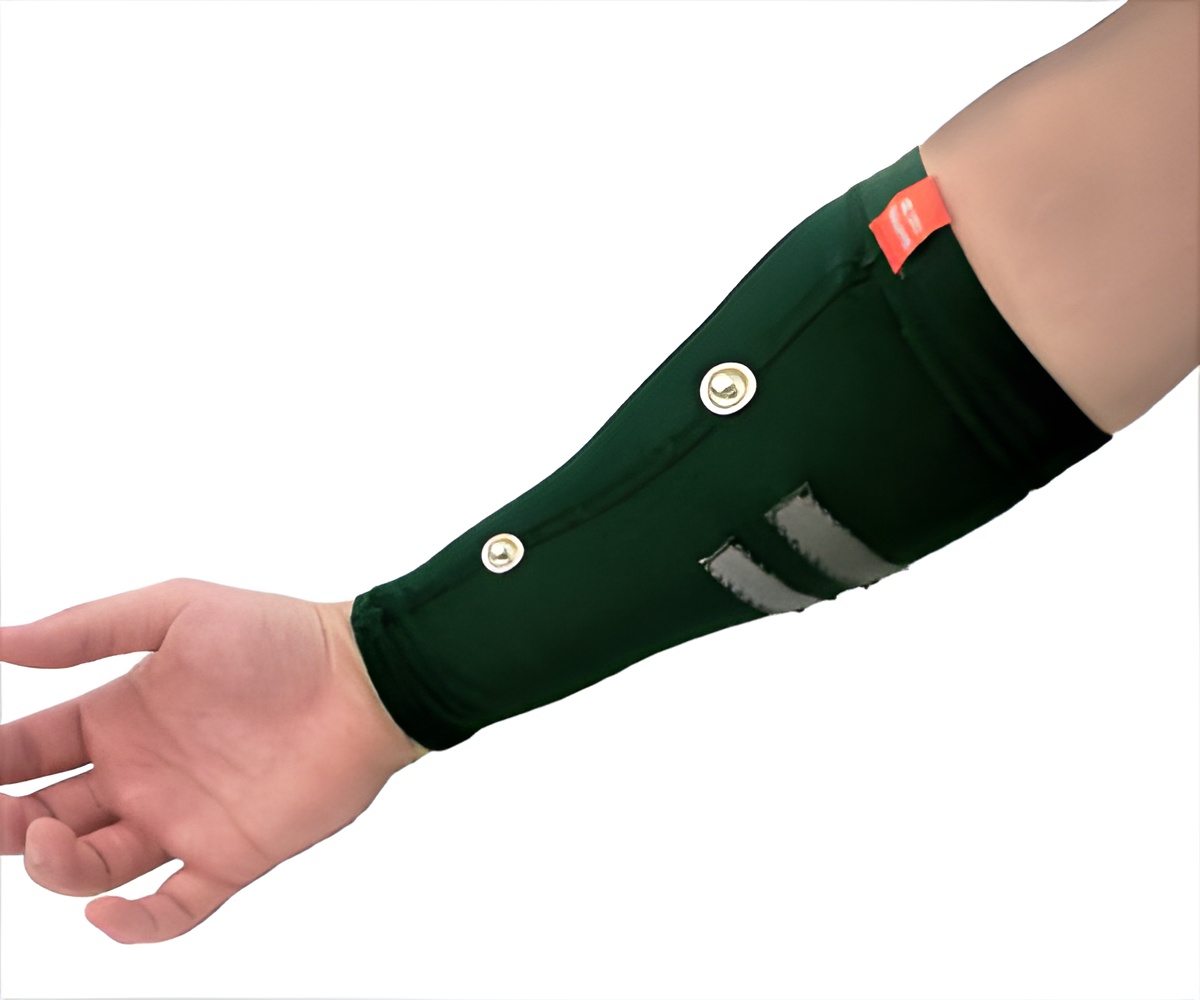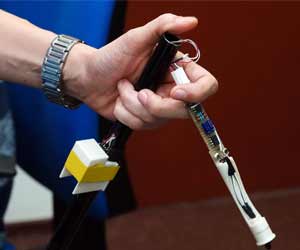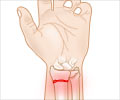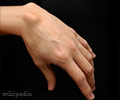A textile-based wearable device that ‘taps’ a user’s wrist with pressurized air, silently guides the person finding their way to their destination.

‘Touch-based stimuli or ‘haptics’, which include hot or cold sensations or cues based on pressure applied to the skin, can offer an alternative to everyday visual and sound cues. #digitalease #cybernavigation’





Advertisement
Haptic Technology - The Future of Digital Notifications
Haptic technology is the use of tactile sensations such as cold, hot, vibration or pressurised air to stimulate the sense of touch for alerts. (1✔ ✔Trusted SourceHaptic Technology: The Future of Engagement?
Go to source)
Visual and auditory cues like a flashing light on a dashboard or the ping of a new text message can effectively transmit information. However, many people are overwhelmed by such cues in their daily lives—and with too many notifications conveyed the same way, information can get lost in the clutter.
But while devices that produce visual cues or sounds are prevalent in everyday life, devices that use haptic cues are still uncommon since they usually require bulky hardware that weighs down the wearer.
To overcome this obstacle, the Rice University researchers developed a light, comfortable wearable device from textile materials that can be worn on a user’s arm.
The team tested the device by measuring forces applied to the user as a function of pressure and the shape of the wearable—a task that proved somewhat challenging since different users had different experiences with cues from the same device, said Barclay Jumet, a Ph.D. candidate in mechanical engineering and the lead author of the study.
Advertisement
Smart Wearables to Ease Life
“Every person has a differently shaped arm, a different perception of what “feels good” in terms of the forces applied and the timing of the forces, and different capabilities in responding to the type of haptic cues we delivered,” said Jumet. “Fortunately, our textile-based platform is easily tailorable and adjustable to a range of body types and sizes.”After testing the performance of their haptic textile sleeves in a lab-based study involving human participants, the researchers set out to see how well these devices could help users navigate in a real-world scenario. They integrated two of the sleeves into a shirt and completed the ensemble with a textile belt which they attached auxiliary components, making the device portable. Next, an experimenter sent cues to the user wearing the device, directing them where to walk for one kilometer.
“We were impressed that the user was able to navigate the streets of Houston and subsequently trace 50-meter-long Tetris pieces on an open field with 100% accuracy in receiving and interpreting navigational haptic cues,” said Daniel Preston, an assistant professor of mechanical engineering and the corresponding author of the study.
Advertisement
Evaluating Digital Travel Aids
The researchers demonstrated that users correctly interpreted which direction the device was telling them to go in an average of 87% of the time. Since the wearable embeds most of its control system within the fabric itself, using air instead of electronics, it can be built lighter and more compact than existing designs.“We envision this device will be used by individuals who need or desire information to be transmitted to them privately and in a way that can be seamlessly integrated into clothing or other wearables,” said Marcia O’Malley, Chair of the Department of Mechanical Engineering at Rice University and an author of the study.
In another navigation test, the participant again interpreted the cues with total accuracy, this time while riding an electric scooter over paved bricks, concrete sidewalks, and graveled paths.
“Further development will seek to improve the ability to convey even more complex cues that remain easily and naturally discerned by the user,” said Preston.
Reference:
- Haptic Technology: The Future of Engagement? - (https://masschallenge.org/articles/haptic-technology/)













